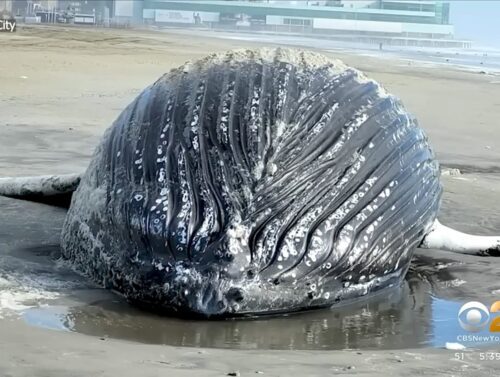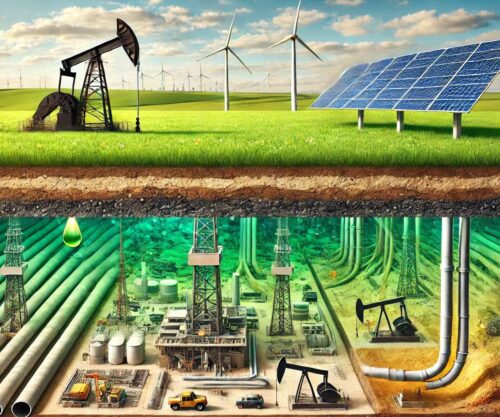
Not only does CO2 have no discernible effect on climate, but any alleged anthropogenic role within the hypothetical greenhouse effect is not detectable either. [some emphasis, links added]
In recent decades, there has been a concerted effort to assert it is “settled” science to characterize variability in the atmospheric CO2 concentration – assumed to be modulated by human activity – as the predominant factor in both climate change and the so-called greenhouse effect.
Science, however, is never truly settled.
A new Frontiers study succinctly unsettles this prevailing paradigm with surgeon-like precision. In under 20 pages, the authors deliver a cogent critique of the “CO2 drives climate” presumption.
A few of the key points include:
▪ CO2 only contributes about 4-5% to the greenhouse effect, whereas water vapor and clouds contribute 95%.
▪ Of that 4-5% greenhouse effect contribution from CO2, just 4% of that can be attributed to human activities (i.e., fossil fuel emissions). Thus, about 96% of the 4% contribution from CO2 can be attributed to natural processes.
“WV [water vapor] and clouds (for which WV is responsible) dominate the ARE [atmospheric radiative effect], while CO2 contributes only 4-5% to it. Also, anthropogenic CO2 emissions are only 4% of the total, with the vast majority (96%) being natural. Additionally, evidence suggests that changes in temperature precede those in CO2 concentration, thus challenging the assumption that CO2 drives temperature.”
▪ As Fig. 10 in the study indicates, observed changes in the atmospheric CO2 concentration cannot be demonstrated to have exerted any effect in altering longwave radiation measurements, much less the surface temperatures.
A hypothetical doubling of the CO2 concentration [NC-RAGs, or non-condensing radiatively active gases] “results in a temperature increase of zero”.
“[W]hile the role of CO2 in photosynthesis is important in biochemical terms, it becomes negligible in terms of its contribution to the surface energy balance.”
“[T]he observed increase of the atmospheric CO2 [from 300 ppm to 420 ppm] has not altered the ARE [atmospheric radiative effect or greenhouse effect] in any discernible way.”

Greenhouse Effect and Greenhouse Gases = Atmospheric Radiative Effect and Radiatively Active Gases
Common-use terms like greenhouse effect and greenhouse gases are misrepresentations of what occurs in the real-world atmosphere.
Heat transfer for both a greenhouse and in the real-world surface-troposphere is dominated by convection, not radiation.
Atmospheric mass is much denser near the surface, decreasing with altitude. This leads to a 6.5°C per km temperature gradient in the troposphere.
“[H]igher atmospheric mass increases the heat capacity of the atmosphere, and thus decreases the surface net radiative cooling [and] increases the global mean surface temperature” – Chemke and Kaspi, 2017
So, for example, while the temperatures at the base of equatorial Mount Kilimanjaro range around 24°C annually, the mean summit temperatures average about -18°C.
This 42°C temperature differential is similar, physics-wise, to the 36 Kelvin (K) surface warming (252 K vs. 288 K) commonly attributed to the Earth’s so-called greenhouse effect (atmospheric radiative effect), or greenhouse gases (radiatively active gases) like CO2 and water vapor.
But just as the 42°C summit-to-base Kilimanjaro temperature differential has to do with the lapse rate/temperature gradient, and not the radiative effect of variations in the concentration of gases like CO2, so too does the 36 K temperature differential for the surface-atmosphere.
Thus, CO2, a non-condensing radiatively active gas (NC-RAG), can be said to have exactly zero effect on the 252 K vs. 288 K temperature gradient.
“Hence, it is the temperature gradient that makes the surface-level temperature increase from about 252 K … to about 288 K (i.e., by 36 K). This increase is usually attributed to the ‘greenhouse effect’, but it is mainly the result of the temperature gradient.”
“The effect of the NC-RAG [non-condensing radiatively active gases] is zero for an isothermal atmosphere.”

The paper – including the supplementary data compilation – is notable both for its concise simplicity and its wide-ranging coverage in critiquing the “settled” significance of the CO2 impact.
Read more at No Tricks Zone




















If you look at fig 10, and compare A1 with that for 2x nc-RAG (under earth conditions), you can see about 1K to 2K increase. That occurs only because of the convection mediated formation of a lapse rate In an isotropic atmosphete the authors suggest nc-RAGs (eg CO2) has negligible effect.
Interestingly, the value is within the range suggested by Happer and colleagues. Additionally, it is around the figure you arrive at if you use pre-industrial equilibrium conditions, allowing for feedbacks to both solar and nc-RAGs (making the assumption that water vapor responds), to determine a x2 nc-RAG warming.
If you look at fig 10, and compare A1 with that for 2x nc-RAG (under earth conditions), you can see about 1K to 2K increase. That occurs only because of the convection mediated formation of a lapse rate In an isotropic atmosphete the authors suggest nc-RAGs (eg CO2) has negligible effect.
Interestingly, the value is within the range suggested by Happer and colleagues. Additionally, it is around the figure you arrive at if you use pre-industrial equilibrium conditions, allowing for feedbacks to both solar and nc-RAGs (making the assumption that water vapor responds), to determine a x2 nc-RAG warming.
K. Richards is A CO2 does nothing science denier.
Websites that publish his articles have been fooled.
Most articles at this website are good and I recommend them.
KR Articles are rare exceptions.
CO2 emissions are the primary cause of TMIN warming
TMIN = 60% of all warming since 1975.
33% of atmospheric CO2 is from man-made CO2 emissions.
Not 4%
Only ignorant people claim 4%.
Humans added about.280 PPM of CO2 to the atmosphere since 1850.
Atmospheric. CO2 rose about 140 PPM since 1850.
Nature absorbed about 140 PPM of CO2 since 1850.
Nature has been gradually absorbing CO2 for billions of years.
KR knows none of this basic climate science.
https://honestclimatescience.blogspot.com/
The math doesn’t add up. If we added 280 ppm and current levels are 420. That puts co2 levels at 140ppm in the 1800’s. Minimum co2 levels for plant life are 150ppm. Please explain more as it doesn’t make sense.
1850 = 280 ppm
Humans add +280
Nature absorbs -140
Net increase is +140.
2024 = 280 +140 = 420 ppm
Minimum CO2 for C4 plant life is 10 PPM.
C4 plants are 20% of all food plants.
Corn is the major C4 plant
Maybe I’m missing something – your math makes it appear that, between1850 and 2024, nature absorbed 140 ppm more than it had absorbed before 1850. Also, between 1850 and 1950, according to NOAA, earth warmed about 1 deg C. This would cause CO2 outgassing from the oceans.
C4 biomass peaks around today’s CO₂ levels (≈400–450 ppm).
Additional benefit up to ~600 ppm only under stress conditions (mainly drought) as stomata open less.
No clear biomass maximum above 600–800 ppm as the curve flattens.
At 10ppm C4 plants burn internal resources (lose biomass) and stomata open so long that they are extremely affected by water availability.
C3 plants keep increasing biomass strongly up to ~800–1000 ppm.